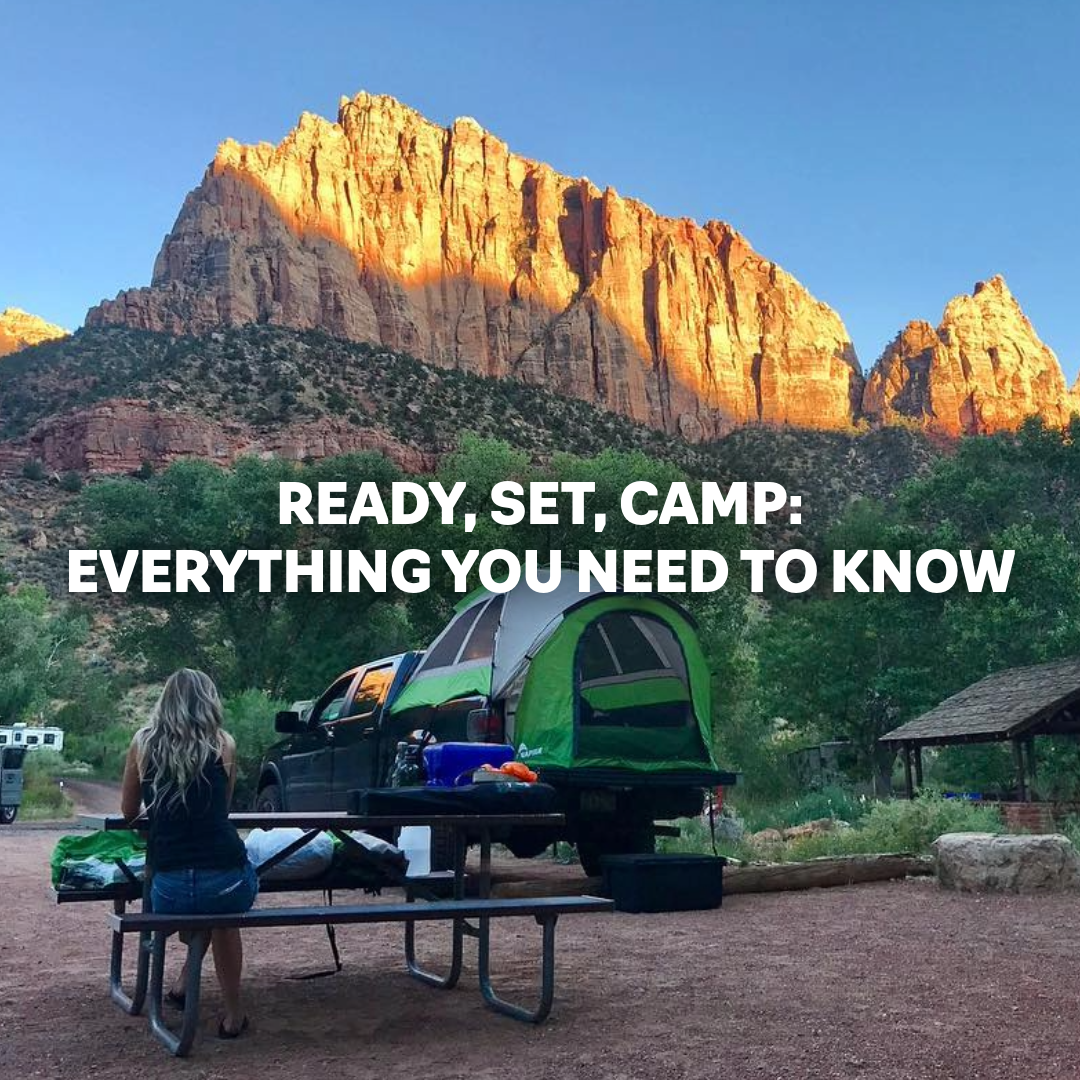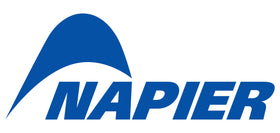Ready, Set, Camp: Everything You Need to Know

Camping is a timeless way to connect with nature, relax, and create unique lasting memories. Whether you're planning a weekend getaway or embarking on your first camping trip, this guide covers everything you need to know, pack, and consider to feel prepared and confident in the outdoors.

Benefits of Camping and Why You Should Go Outdoors
Camping offers countless benefits, from experiencing breathtaking landscapes to fostering a sense of adventure. It’s an opportunity to unplug, bond with loved ones, and explore the natural world around you. Whether you’re chasing quiet mornings by the lake, stargazing in the mountains, or roasting marshmallows over a campfire, there’s a camping experience for everyone.
How-to: Choose the Best Camping Style for Your Adventure
Tent Camping: A classic choice that involves setting up camp in a tent, often pitched directly on the ground, at both campgrounds and on backcountry sites.
Car Camping: Ideal for beginners, car camping offers added comfort by allowing you to drive right up to your campsite and stay elevated from the ground, no matter the weather. Napier's Car Tents make it even more convenient, transforming your car or truck into a cozy home away from home.
Backpacking: For those ready to hike into remote areas, backpacking combines adventure with self-sufficiency. It requires lightweight gear and proper preparation.
Glamping: If you prefer a bit of luxury with your outdoor experience, glamping offers amenities like spacious, furnished tents or cabins for a comfortable retreat. For those looking to save while still enjoying added comfort and space, Napier’s roomy car tents, like the SUV Tent with Screen Room, provide a touch of luxury while keeping you close to nature.
Planning Your First Camping Trip: A Step-by-Step Guide
Choose Your Destination: Research campgrounds in advance and consider their amenities, rules, and reservation requirements. National parks, state parks, and private campgrounds all offer unique experiences.
Check the Weather: Knowing the forecast ahead of time will help you pack appropriately and avoid surprises.
Practice at Home: Setting up your tent or testing your gear in your backyard can help you feel more confident. Setting up a Napier tent? Check out our simple and easy to follow video guides to get you prepped and ready to camp within minutes.
Plan Simple Meals: One of the best parts of camping is the food! Keep it simple and delicious by planning easy meals that everyone will love (think sandwiches, one-pot meals, or pre-marinated ingredients). You can prep at home or pre-plan packing some fun ingredients to get creative with campfire cooking, from classic favorites to new recipes.
To help you get started, check out these fun and easy recipes we've developed for your next adventure, including Mac and Cheese, S'mores, Steak and Eggs, Cinnamon Rolls, Grilled Chicken Caesar Salad, Spider Dogs, Pizza, Eclair Dessert, Grilled Peach Bruschetta, Chicken Pot Pie Gnocchi, Baked Potatoes and Bacon Maple Brie.
Leave No Trace: Don’t forget to consider and respect nature by cleaning up after yourself, staying on trails, and minimizing your impact. Read more about Napier’s Environmental Commitment to nature!
Essential Camping Gear Checklist for Beginners
Shelter: Choose a tent that suits your group size and weather conditions. A rainfly and footprint are essential for protection and durability.
Napier's Car Tents, like the Sportz Dome-To-Go or Sportz Truck Tent, are versatile and easy to set up for both on ground or car camping. For an all-in-one ground camping setup, the Napier Lite Pack Camping Bundle, complete with a two-person tent, footprint, rainfly, and sleeping bags, is ideal for beginners or anyone wanting to simplify their gear and consider truck tent for camping.
Sleep System: Pack a sleeping bag appropriate for the season, an air mattress for added comfort, and a sleeping pad for insulation.
Cooking Supplies: A portable stove, fuel, cookware, and utensils are key. Don’t forget a cooler for perishable food.
Clothing: Layered clothing is crucial for adapting to changing temperatures. Include moisture-wicking base layers, a warm mid-layer, and a waterproof outer layer.
Lighting: Bring a headlamp or flashlight with extra batteries for when it gets dark!
Navigation Tools: A map, compass, or GPS can help you stay on track, especially in unfamiliar areas.
First Aid Kit: Be prepared for minor injuries with a well-stocked first aid kit.
Tent Repair Kit: A must-have for quick fixes, ensuring your car tent stays in top condition.
Miscellaneous: Pack a multi-tool, matches, sunscreen, bug spray, and trash bags.

How to Set Up Your Tent: A Complete Guide
Setting up your tent correctly is crucial for comfort and protection:
Choose Your Site: Find a flat, dry area free of rocks and debris.
If you’re using Napier's Car Tents, like the Sportz Truck Tent or the Backroadz SUV Tent, the process is straightforward and beginner-friendly, just make sure to park on level ground and engage the parking brake.
Unpack and Lay Out Your Tent: Spread out your tent and organize the poles, stakes, and rainfly.
For Napier's Car Tents, ensure the vehicle sleeve is accessible.
Assemble the Poles: Connect the poles and insert them into the corresponding sleeves or clips.
Napier’s color-coded poles make this step quick and easy!
Attach the Tent to the Ground or Your Vehicle: Tighten the tent's guy lines to the ground to help secure the tent and keep it steady.
For Napier's Car Tents; secure the vehicle sleeve to your car’s hatch or truck bed, following the instructions provided. This feature gives you seamless access to your vehicle for added convenience.
Stake It Down: Anchor the tent using stakes to keep it stable, even in windy conditions. For added truck protection, make sure to use Napier's Strap Protectors.
Add the Rainfly: If rain is in the forecast, attach the rainfly for extra protection.
Sidenote: All Napier's Car Tents include a rainfly and are designed to keep you dry and comfortable no matter the weather!
Camping Tips: Final Preparations for a Successful Trip
- Start Small: Choose a nearby location and limit your trip to one or two nights for your first outing.
- Arrive Early: Give yourself plenty of daylight to set up camp and get familiar with your surroundings.
- Stay Flexible: Weather and other factors might require adjustments to your plans. Embrace the unexpected as part of the adventure!
- Relax and Enjoy: Remember, camping is about taking a break from daily routines. Don’t stress about perfection, focus on the experience, and remember that practise makes perfect.
Camping for the first time can feel daunting, but with the right preparation, it’s an incredibly rewarding experience. Ready to start your journey? Grab your gear, embrace the outdoors, and make memories under the stars. Adventure is waiting, it’s time to answer the call!

